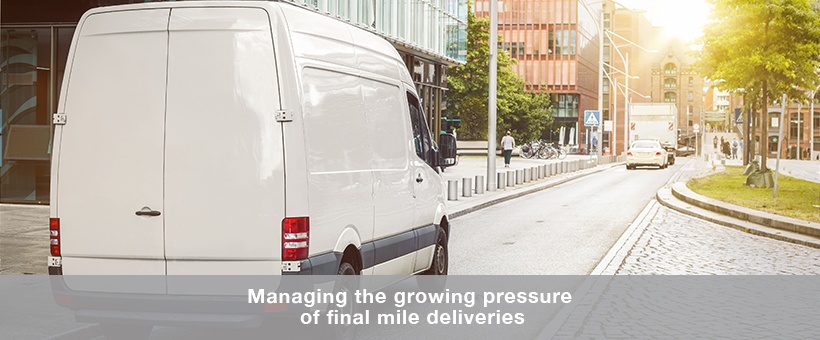
Managing the growing pressure of final mile deliveries
Final mile is the bugbear of logistics, with high-risk urban environments and challenges galore. 2020-2021 put huge pressure on the sector, with substantial increases in e-commerce spending – but final mile operators face different challenges moving forwards. The need to control costs and prevent vehicle downtime and damage is greater than ever.
The commercial pressures
- The online market was worth £693bn in total – a huge and probably permanent increase in ecommerce’s market share. However, as global inflation kicks in and consumers worry about future energy bills, online sales have seen small declines in June and July 2022.
- The pallet networks (designed for B2B distribution) have seen B2C freight grow to 18% of their work, or five million pallets annually. This is the sector’s least favourite type of work, with too little kerb space and problematic deliveries to consumers who don’t understand the limitations of tail-lifts or kerbside delivery.
- Final mile also includes live sites such as schools, hospitals, and construction sites. What these destinations all have in common is that they are live environments, usually accessed through busy urban roads and with sites not designed with professional transport protocols in mind.
- Consumer sales and consumer technologies put greater pressure on logistics operations because householders increasingly expect specific delivery dates and times and want complete reliability.
- Global inflation means that once again logistics companies are likely to see fluctuating volumes. The Black Friday and Christmas peaks will be hard to predict.
- Fuel costs are rising inexorably. According to government statistics, USLD has risen from £1.34ppl in August 2021 to £174.19ppl in August 2022. Fuel escalators are essential- but minimising fuel use will be more effective.
- Safety. A driver’s road risk is significantly higher around vulnerable road users (VRUs) – pedestrians, cyclists, and motorcyclists – and their access to safe parking places can be almost non-existent. The government has poured successive waves of funding into active travel, and has set a target for half of all local journeys to be walking or cycling, underpinned by its new
- Active Travel England department. In other words – the numbers of VRUs will grow and grow.
- The HGV driver shortage is still with us, albeit lower freight volumes have eased the tension in the marketplace. However, driver retention has never been more important. And, with more new drivers coming straight from car licences to C+E, there is a much greater need for driver training and coaching.
What are the solutions for final mile?
Having full visibility of driver behaviour is the single biggest thing operators can do to protect their drivers, prevent collision, lower costs, and ensure high productivity. Using a system like SmartDrive’s safety programme will:
- Help you coach drivers out of risky behaviours and prevent collisions.
- Capture any exceptional events.
- Provide evidence to exonerate drivers from no-fault damage.
- Provide driver coaching which will reduce fuel bills.
- Driver behaviour improvements will also protect the vehicle, including lessening wear and tear and minimising unscheduled downtime.
- Improve driver retention as cared for, developed and protected drivers tend to stay with their employer longer.
- Capture footage of difficult access points, routes or even threatening individuals. Drivers can activate cameras manually if they want to record events for their own security or to show their managers.
For more information on how SmartDrive can help you protect your drivers, see our guide.
- Posted by Shannon McNamara
- On November 22, 2022

